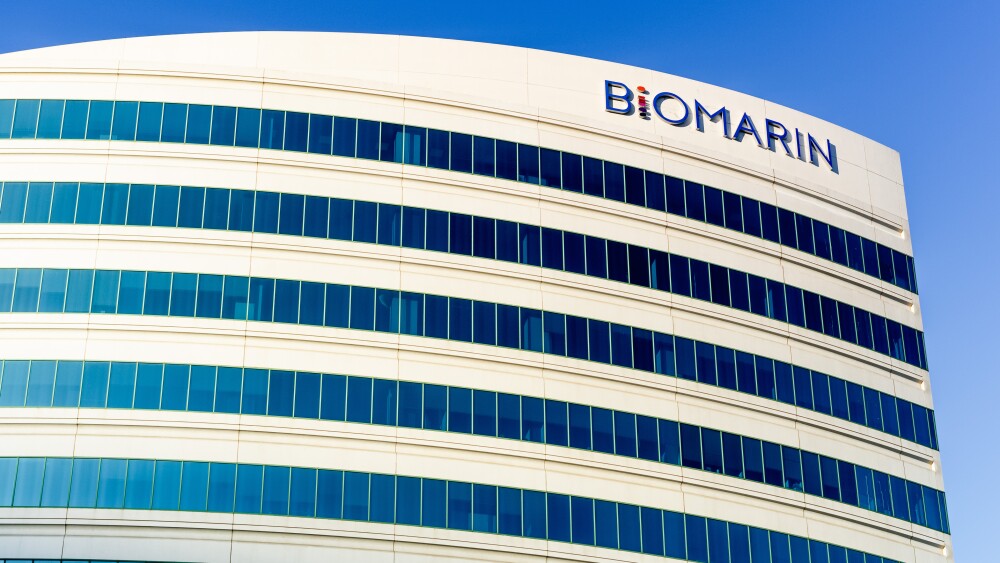In addition to coming sooner than expected, the results are even better than expected. The trial hit all primary efficacy endpoints.
Ascannio/Shutterstock
Pfizer and BioNTech announced they have completed their Phase III trial of their COVID-19 vaccine candidate, BNT162b2. This comes only a week after announcing interim data from the trial suggesting a 90% efficacy rate for the vaccine. The more comprehensive data suggests a 95% efficacy rate. This makes it roughly equivalent to the efficacy rate of the measles and shingles vaccines, and on par with what Moderna reported on their vaccine this week.
In addition to coming sooner than expected, the results are even better than expected. The trial hit all primary efficacy endpoints. The first primary objective analysis is based on 170 cases of COVID-19, with 162 cases seen in the placebo group compared to eight cases in the cohort receiving the vaccine. They found efficacy consistent across all ages, genders, races and ethnicities, and the efficacy in older adults over 65 years of age was more than 94%.
The companies say the Data Monitoring Committee has not reported any serious safety issues and in a review of unblinded reactogenicity data from the final analysis of at least 8,000 participants 18 years and older, the vaccine was well tolerated. Most adverse events resolved shortly after vaccination. Grade 3 adverse events are classified as severe and there were about 2% of the study participants, and included fatigue (3.8%) after the first or second dose and headache (2.0%) after the second dose. As was seen in the earlier data reviews and trials, older adults reported fewer and milder side effects.
In particularly good news, the companies indicate that they have hit the safety threshold required by the U.S. Food and Drug Administration (FDA) to apply for emergency use authorization (EUA) “within days.” Some sources say they could apply as early as Friday, November 20. They plan to submit the request within the next few days based on the data to date as well as supporting data related to manufacturing quality and consistency. They also will begin submitting the data to other regulatory authorities worldwide.
“We are grateful that the first global trial to reach the final efficacy analysis mark indicates that a high rate of protection against COVID-19 can be achieved very fast after the first 30-microgram dose, underscoring the power of BNT162 in providing early protection,” said Ugur Sahin, chief executive officer and co-founder of BioNTech. “These achievements highlight the potential of mRNA as a new drug class. Our objective from the very beginning was to design and develop a vaccine that would generate rapid and potent protection against COVID-19 with a benign tolerability profile across all ages. We believe we have achieved this with our vaccine candidate BNT162b2 in all age groups studied so far and look forward to sharing further details with the regulatory authorities.”
The companies believe they can produce up to 50 million vaccine doses by the end of the year globally, and up to 1.3 billion by the end of 2021. Currently Pfizer has four facilities in operation for manufacturing and supply chain: St Louis, Missouri; Andover, Massachusetts; Kalamazoo, Michigan; Puurs in Belgium. BioNTech also has manufacturing sites in operation in Germany.
The Pfizer-BioNTech vaccine requires storage at about -94 degrees F, which requires specialized freezers. The ultra-cold storage needed for the Pfizer-BioNTech product is not unprecedented. Debra Kristensen, who has worked in vaccine innovation and supply chains at PATH, an international public health nonprofit, for thirty years, told NPR, “I believe it can be done. Ebola vaccine, for example, was successfully used in a few African countries and also required this ultra-cold chain storage.”
Distributing the vaccine under ultra-cold chain storage conditions, she said, “is possible, but it’s definitely going to be much more expensive and more difficult.”
Pfizer has designed its own packaging using dry ice that can be stored for weeks without the specialized freezers.
Two days ago, Moderna reported interim efficacy data for its COVID-19 vaccine of 94.5%. They are on track for an EUA in the next several weeks as well. The Moderna vaccine is stable at 36 to 46 degrees F, about the temperature of a standard home or medical refrigerator, for up to 30 days and can be stored for up to six months at -4 degrees F.
Both are mRNA vaccines and both are showing extremely high efficacy. Moderna believes it can have about 20 million doses of the vaccine, mRNA-1273, ready to ship in the U.S. by the end of the year. It also believes it can manufacture 500 million to 1 billion doses globally in 2021.
Only long-term data will indicate how long the protective effects of the vaccine will last. Some vaccines offer decades of protection, while others, such as the influenza, require yearly doses. Some of this is related to different viral strains, while in some cases, the body’s immunity wanes over time.
In a media interview hosted by The New York Times yesterday, Albert Bourla, chief executive officer of Pfizer, stated, “I think the questions about the safety at large also have been answered. Our safety milestone has been achieved already, and we are preparing now for submissions.”
The FDA has scheduled an advisory committee meeting for December 8, 9, and 10, according to reports, that will take into consideration the applications. The source told CNN that the agency may potentially make a decision at the end of the meeting on December 10 on the EUA.
“It will make sense that in all likelihood the FDA will consider both applications together,” the source told CNN, because both vaccines use the same mRNA technology and have very similar safety and efficacy data from their large Phase III clinical trials.
It seems likely that Americans, probably beginning with high-risk populations and healthcare and first-line responders, will be able to start getting the vaccine toward the end of December.





